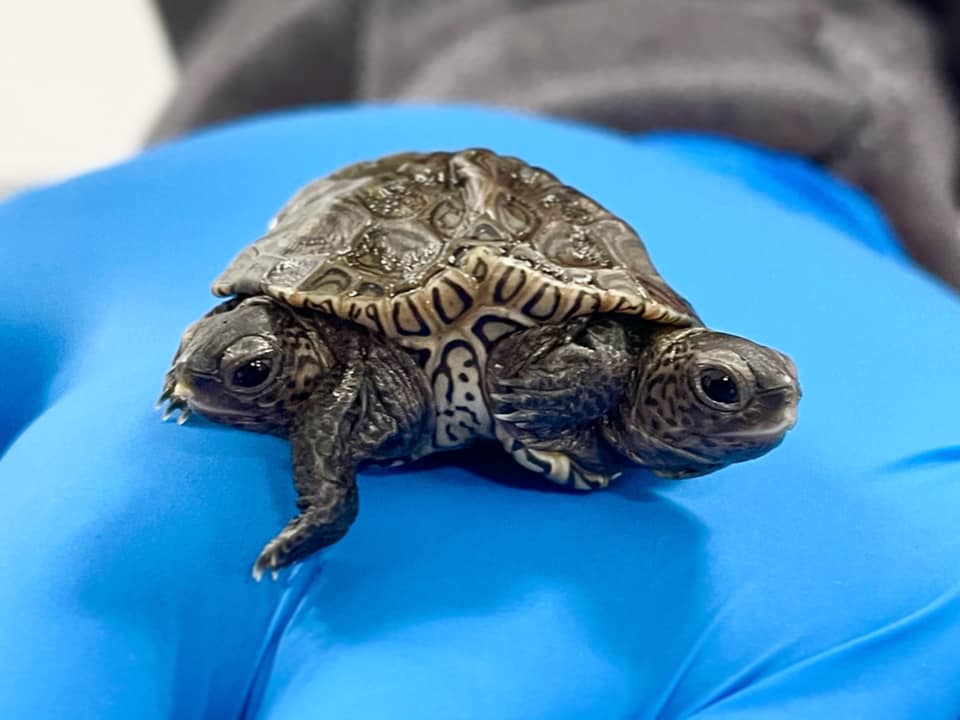Your support helps us to tell the story
From reproductive rights to climate change to Big Tech, The Independent is on the ground when the story is developing. Whether it's investigating the financials of Elon Musk's pro-Trump PAC or producing our latest documentary, 'The A Word', which shines a light on the American women fighting for reproductive rights, we know how important it is to parse out the facts from the messaging.
At such a critical moment in US history, we need reporters on the ground. Your donation allows us to keep sending journalists to speak to both sides of the story.
The Independent is trusted by Americans across the entire political spectrum. And unlike many other quality news outlets, we choose not to lock Americans out of our reporting and analysis with paywalls. We believe quality journalism should be available to everyone, paid for by those who can afford it.
Your support makes all the difference.A two-headed turtle, the size of a chicken McNugget, is the newest attraction at the New England Wildlife Centre at Cape Cod.
“No you are not seeing double! This diamondback terrapin hatchling actually has two heads. 🐢🐢,” the centre posted on Facebook. The hatchling was found in a protected nesting site and taken to the hospital for assessment by the Barnstable department of natural resources.
The unnamed turtle, thought to be twins with fused spines, are very alert and active, the team looking after them shared in the post.
They added: “They are eating, swimming, and gaining weight each day. It is impossible to get inside the heads of these two, but it appears that they work together to navigate their environment.”
An X-ray by the veterinarians revealed that the two heads also have two spines which fuse into one further down the body.
According to veterinarians, the turtle has bicephaly — a condition of having two heads — occurring from genetic and environmental factors that shape an embryo during its development and into a rare anomaly.
The condition is similar to that of conjoined twins in humans where they share parts of their body but have some parts freely moving and independent to their functioning.
Officials at the wildlife centre explained that animals with such a condition do not always survive very long because of difficulties like escaping predators and equal intake of food. “But these two have given us a reason to be optimistic!”
The twin-headed turtle is being observed while moving and swimming with control of three legs each.
“After hatching they had one shared yolk sac that provided them nutrition in the first few days after entering the world, however, with that resource used up our next step was to see what their gastrointestinal (GI) tract looked like and if they would each be able to eat and absorb nutrients to continue to grow,” the centre said.
The right side of the body appears to be more developed but the hatchlings are both eating and digesting food.
They can also coordinate swimming and come up to the surface to breathe, showed a supervised deep water swim test.
In the days ahead, the wildlife team said it is looking to get a CT scan for more information on internal structures.
However, the question looms on the survival of the hatchling which can face difficulties or pain in future, said Katrina Bergman, CEO of the centre.
“Our only hesitation is, we didn’t want them to be in any pain, because if that was the case, we would humanely euthanise them. But as far as we can tell, they’re happy little guys,” she told The Washington Post.

Join our commenting forum
Join thought-provoking conversations, follow other Independent readers and see their replies
Comments